Dronelost.com – Fishing is one of the oldest and most popular hobbies in the world. It can be relaxing, rewarding, and challenging at the same time. But what if you could take your fishing experience to the next level with the help of a drone?
Drone fishing is a new and exciting way to scout for fish, cast your line, and even reel in your catch. It can expand your fishing range, improve your accuracy, and increase your chances of landing a trophy fish.
However, drone fishing also comes with some challenges, such as legal regulations, ethical dilemmas, and technical difficulties.
By the end of this article, you will have a comprehensive understanding of drone fishing and how to use a drone for fishing effectively and responsibly. Let’s get started!
What is Drone Fishing and How Does it Work?
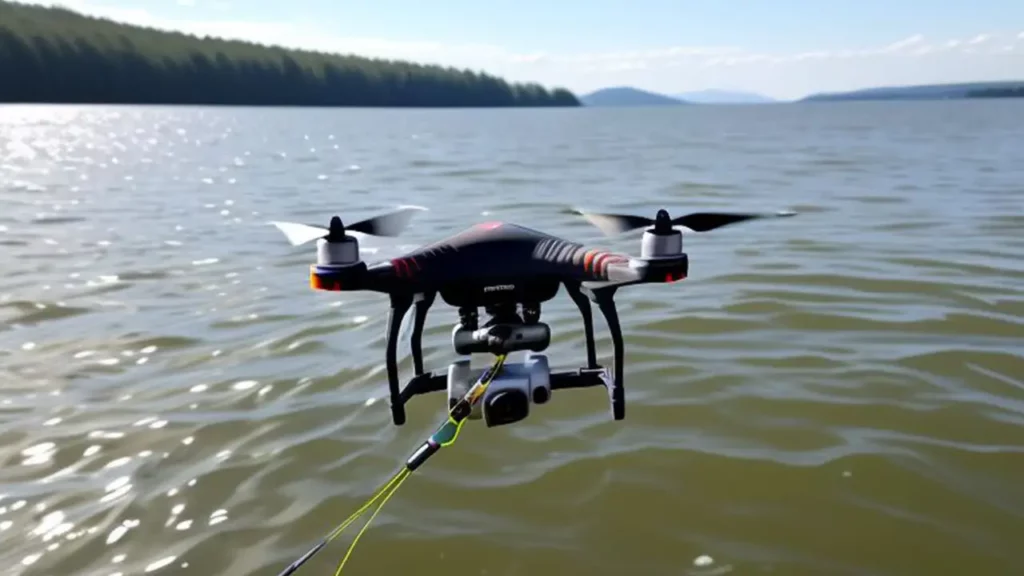
Drone fishing is the use of unmanned aerial vehicles (UAVs) or drones to assist with fishing activities. Drones are remote-controlled devices that can fly in the air, take photos and videos, and carry payloads. Some drones can also dive underwater and perform various tasks.
There are different ways to use a drone for fishing, depending on the type of drone, the fishing environment, and the personal preference of the angler. Here are some of the most common drone fishing methods:
Drone Reconnaissance
This method involves using a drone to scout the water surface and look for signs of fish, such as schools, splashes, or shadows. The drone can also provide information about the water conditions, such as depth, temperature, clarity, and currents. The angler can use the drone’s camera to stream live video to a smartphone or tablet, or record the footage for later analysis.
Drone reconnaissance can help the angler find the best spots, especially in unfamiliar or large areas. It can also save time and energy by eliminating the need to paddle or walk around the water. However, this method requires a drone with a good camera, a stable flight, and a long battery life.
Drone Casting
This method involves using a drone to carry and drop the fish, bait, or lure into the water. The drone can cast the line much farther than the angler can manually, allowing the angler to reach distant or inaccessible fishing zones. The drone can also drop the line precisely where the fish are, increasing the accuracy and efficiency of the cast.
Drone casting can help the angler target bigger and more elusive fish, especially in deep or rough waters. It can also reduce the risk of tangling or snagging the line on obstacles, such as rocks, weeds, or boats. However, this method requires a drone with a payload release mechanism, a strong lift, and a reliable connection.
Drone Casting and Pulling
This method involves using a drone to cast and pull the fishing line, bait, or lure into and out of the water. The drone can act as a fishing rod and reel, controlling the tension and speed of the line. The drone can also fight and land the fish, bringing it back to the angler.
Drone casting and pulling can help the angler catch more fish in less time, especially in shallow or calm waters. It can also eliminate the need for a fishing rod and reel, reducing the cost and hassle of fishing equipment. However, this method requires a drone with a powerful motor, a durable propeller, and a high payload capacity.
Underwater Drone Fishing
This method involves using a drone to explore and fish underwater. The drone can dive into the water, take photos and videos, and use sonar and sensors to detect fish and other features. The drone can also attach a bait or lure to a fishing line and drop it into the water, attracting and hooking the fish.
Underwater fishing can help the angler discover and access new fishing grounds, especially in deep or murky waters. It can also provide a unique and immersive fishing experience, allowing the angler to see and interact with the underwater world. However, this method requires a drone that is waterproof, buoyant, and maneuverable.
What are the Benefits and Drawbacks of Drone Fishing?
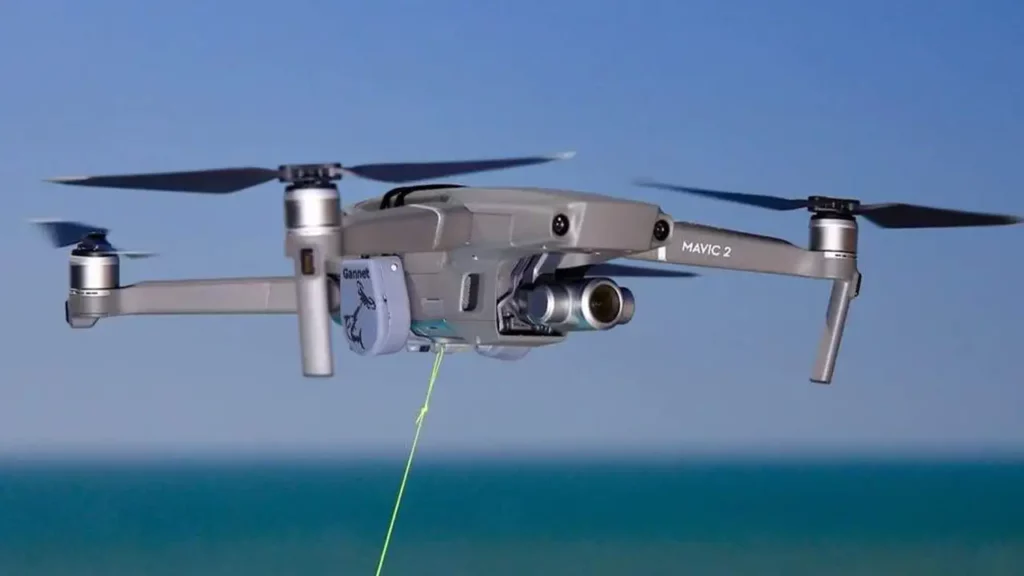
Drone fishing has many advantages and disadvantages, depending on how you look at it. Here are some of the pros and cons of drone fishing:
Pros
- Drone fishing can expand your fishing range, allowing you to reach more fish and more fishing spots.
- It can improve your fishing accuracy, enabling you to cast your line exactly where the fish are.
- It can increase your fishing success, enhancing your chances of landing a trophy fish.
- Drone fishing can save your time and energy, eliminating the need to paddle or walk around the water.
- Drone fishing can reduce your fishing costs, minimizing the need for a boat, a kayak, or a fishing rod and reel.
- Drone fishing can add fun and excitement to your fishing adventure, offering a new and innovative way to fish.
Cons
- Drone fishing can be expensive, requiring you to buy and maintain a drone and its accessories.
- Drone fishing can be complicated, demanding you to learn and master the skills and techniques of drone operation and fishing.
- Drone fishing can be risky, exposing you to the dangers of drone malfunction, damage, or loss.
- Drone fishing can be illegal, violating the laws and regulations of drone use and fishing in some areas.
- Drone fishing can be unethical, upsetting the traditional and fair values of fishing and angling.
- Drone fishing can be annoying, disturbing the peace and privacy of other anglers and water users.
What are the Best Drones and Accessories for Drone Fishing?
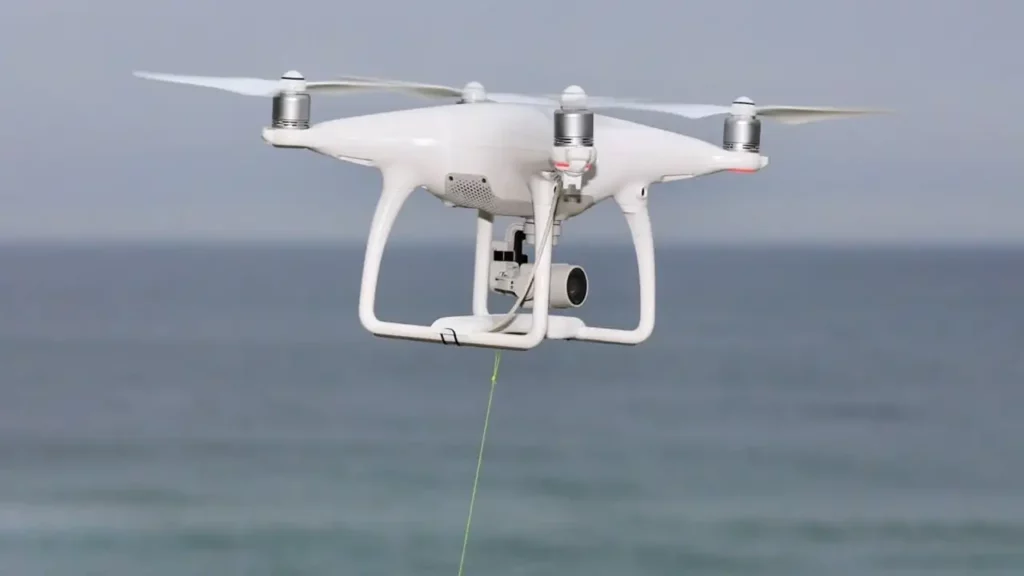
Not all drones are suitable for fishing. If you want to use a drone for fishing, you need to choose a drone that has the following features:
- A long flight time: The drone should be able to fly for at least 20 minutes, preferably more, to give you enough time to scout and fish.
- A high payload capacity: The drone should be able to carry at least 1 kilogram, preferably more, to handle the weight of the fishing line, bait, or lure, and the fish.
- A waterproof design: The drone should be able to withstand water splashes, rain, or snow, and ideally float on water, to prevent water damage or sinking.
- A stable flight: The drone should be able to fly smoothly and steadily, even in windy or turbulent conditions, to ensure a safe and accurate flight.
- A good camera: The drone should have a high-quality camera, preferably with a gimbal, to provide a clear and stable video feed or recording.
- A reliable connection: The drone should have a strong and secure connection, preferably with a long range, to maintain the control and communication with the remote controller or the smartphone.
Some of the best drones for fishing are:
- SwellPro SplashDrone 4: This is a waterproof drone that can float on water, carry up to 2 kilograms of payload, and fly for up to 30 minutes. It has a 4K camera with a 3-axis gimbal, a payload release mechanism, and a return home feature. It is ideal for fishing in saltwater, freshwater, or frozen lakes.
- DJI Phantom 4 Pro V2.0: This is a high-performance drone that can fly for up to 30 minutes, carry up to 1.3 kilograms of payload, and reach up to 7 kilometers of range. It has a 4K camera with a 3-axis gimbal, a collision avoidance system, and a flight mode switch. It is ideal for fishing in open and clear waters.
- PowerVision PowerRay: This is an underwater drone that can dive up to 30 meters deep, carry up to 1 kilogram of payload, and operate for up to 4 hours. It has a 4K camera with a 3-axis gimbal, a sonar fish finder, and a bait drop system. It is ideal for fishing in deep or murky waters.
In addition to a drone, you also need some accessories to enhance your drone fishing experience. Some of the essential accessories are:
- A fishing line: You need a fishing line that is strong enough to withstand the tension and weight of the drone and the fish. You also need a fishing line that is long enough to reach the desired fishing spot. A braided fishing line is recommended, as it is more durable and resistant to abrasion than a monofilament or a fluorocarbon line.
- A fishing hook: You need a fishing hook that is sharp enough to penetrate the fish’s mouth and hold it securely. You also need a fishing hook that is appropriate for the size and type of the fish you are targeting. A circle hook is recommended, as it is more likely to hook the fish in the corner of the mouth and reduce the damage and mortality of the fish.
- A fishing bait or lure: You need a fishing bait or lure that is attractive and effective for the fish you are targeting. You also need a fishing bait or lure that is suitable for the fishing environment and technique you are using. A live or natural bait is recommended, as it is more appealing and realistic than an artificial or synthetic bait.
- A payload release mechanism: You need a payload release mechanism that is compatible with your drone and can attach and detach the fishing line, bait, or lure easily and reliably. You also need a payload release mechanism that is controllable and adjustable, allowing you to drop the payload at the right time and place. A remote-controlled or app-controlled payload release mechanism is recommended, as it is more convenient and accurate than a manual or automatic payload release mechanism.
- A landing pad: You need a landing pad that is visible and stable for your drone to land safely and smoothly. You also need a landing pad that is waterproof and durable, to protect your drone from water and dirt. A bright-colored or reflective landing pad is recommended, as it is more noticeable and attractive for your drone.
- A spare battery: You need a spare battery that is compatible with your drone and can provide enough power for your drone to fly longer and farther. You also need a spare battery that is rechargeable and portable, to save your money and space. A high-capacity or fast-charging battery is recommended, as it is more efficient and convenient for your drone.
How to Choose a Suitable Fishing Spot and Technique for Drone Fishing?
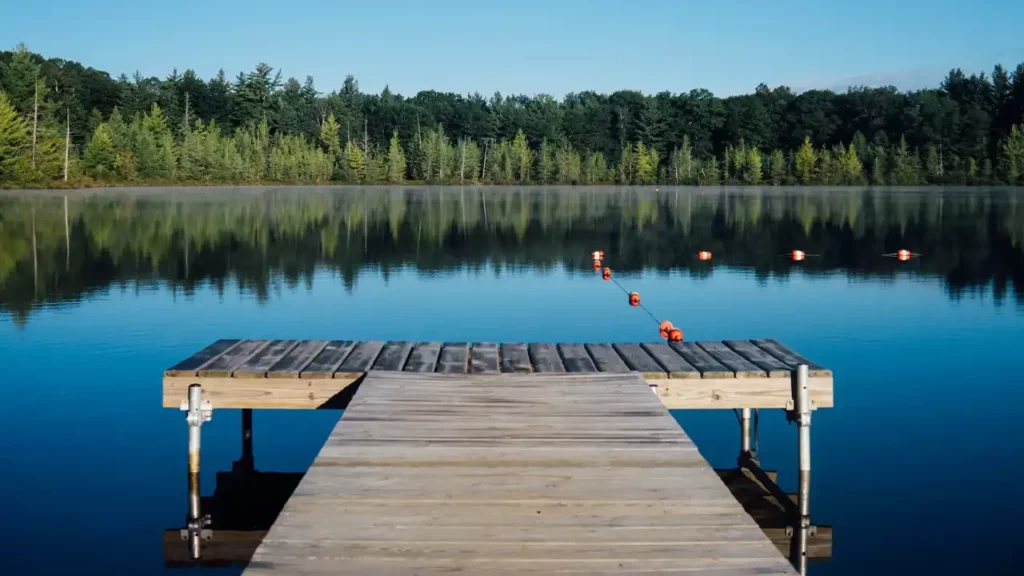
Choosing a suitable fishing spot and technique for drone fishing is crucial for your fishing success and safety. You need to consider several factors, such as:
- The type and size of the fish you want to catch: Different fish have different habitats, behaviors, and preferences. You need to research and understand the fish you are targeting, and choose a fishing spot and technique that match their characteristics. For example, if you want to catch tuna, you need to find a fishing spot that is deep and open, and use a drone casting and pulling technique with a live bait.
- The weather and water conditions: Different weather and water conditions have different effects on the fish and the drone. You need to check and monitor the weather and water conditions, and choose a fishing spot and technique that suit them. For example, if the weather is windy and the water is rough, you need to find a fishing spot that is sheltered and calm, and use a drone reconnaissance technique with a sonar fish finder.
- The legal and ethical regulations: Different areas have different laws and rules regarding drone use and fishing. You need to respect and follow the legal and ethical regulations, and choose a fishing spot and technique that comply with them. For example, if the area is a marine protected area or a private property, you need to obtain permission and authorization, and use a drone fishing technique that is environmentally friendly and socially responsible.
How to Stay Safe and Legal While Drone Fishing?
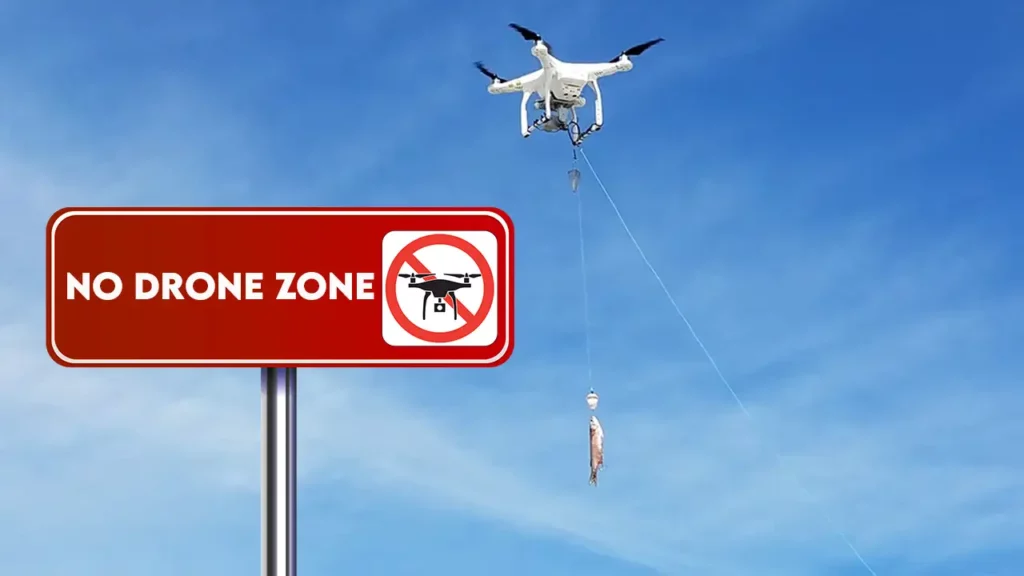
Drone fishing can be fun and rewarding, but it can also be dangerous and illegal if you are not careful and responsible. You need to take some precautions and measures to stay safe and legal while drone fishing, such as:
- Register your drone: You need to register your drone with the relevant authorities, such as the Federal Aviation Administration (FAA) in the United States, and display your registration number on your drone. This will help you identify and recover your drone in case of loss or theft, and avoid fines and penalties for flying an unregistered drone.
- Follow the drone rules: You need to follow the drone rules and regulations in your area, such as the maximum altitude, speed, and distance you can fly your drone, the minimum distance you need to keep from people, animals, and buildings, and the restricted or prohibited areas you need to avoid flying your drone. This will help you prevent accidents and conflicts with other drone users and water users, and avoid fines and penalties for violating the drone rules.
- Check your drone: You need to check your drone and its accessories before and after each flight, such as the battery, the propeller, the camera, the payload release mechanism, and the fishing line, bait, or lure. This will help you ensure your drone is in good condition and ready to fly, and avoid malfunctions and damages during the flight.
- Plan your flight: You need to plan your flight ahead of time, such as the route, the duration, the landing spot, and the emergency plan. This will help you optimize your flight performance and efficiency, and avoid obstacles and interferences during the flight.
- Fly your drone: You need to fly your drone safely and responsibly, such as keeping your drone in sight, maintaining a stable and smooth flight, controlling the payload release and retrieval, and monitoring the battery level and the connection signal. This will help you achieve your fishing goals and enjoy your fishing experience, and avoid crashes and losses during the flight.
Drone fishing is a new and exciting way to fish with the help of a drone. It can offer many benefits, such as expanding your fishing range, improving your fishing accuracy, and increasing your fishing success. However, it can also pose some challenges, such as being expensive, complicated, risky, illegal, or unethical.
Therefore, you need to choose a suitable drone and accessories, a suitable fishing spot and technique, and follow the safety and legal guidelines while drone fishing. You also need to practice your drone flying skills, learn from other drone fishers, and experiment with different drone fishing methods to improve your drone fishing experience. We hope this article has given you a comprehensive overview of drone fishing and how to use a drone for fishing effectively and responsibly. Happy drone fishing!
